Universal redirection of CAR T cells against solid tumours via membrane-inserted ligands for the CAR
- PMID: 37291434
- PMCID: PMC10504084
- DOI: 10.1038/s41551-023-01048-8
Universal redirection of CAR T cells against solid tumours via membrane-inserted ligands for the CAR
Abstract
The effectiveness of chimaeric antigen receptor (CAR) T cell therapies for solid tumours is hindered by difficulties in the selection of an effective target antigen, owing to the heterogeneous expression of tumour antigens and to target antigen expression in healthy tissues. Here we show that T cells with a CAR specific for fluorescein isothiocyanate (FITC) can be directed against solid tumours via the intratumoural administration of a FITC-conjugated lipid-poly(ethylene)-glycol amphiphile that inserts itself into cell membranes. In syngeneic and human tumour xenografts in mice, 'amphiphile tagging' of tumour cells drove tumour regression via the proliferation and accumulation of FITC-specific CAR T cells in the tumours. In syngeneic tumours, the therapy induced the infiltration of host T cells, elicited endogenous tumour-specific T cell priming and led to activity against distal untreated tumours and to protection against tumour rechallenge. Membrane-inserting ligands for specific CARs may facilitate the development of adoptive cell therapies that work independently of antigen expression and of tissue of origin.
© 2023. The Author(s).
Conflict of interest statement
A.Q.Z., A.H., L.E.C. and D.J.I. have submitted a patent application filed by MIT related to the data presented in this work. D.J.I. is a consultant and equity holder in Elicio Therapeutics, which has licensed rights to the MIT intellectual property mentioned above. The other authors declare no interests.
Figures
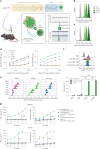

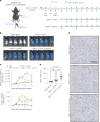
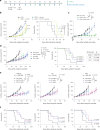
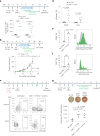





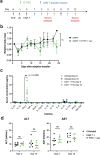

Similar articles
-
Switchable CAR T cell strategy against osteosarcoma.Cancer Immunol Immunother. 2023 Aug;72(8):2623-2633. doi: 10.1007/s00262-023-03437-z. Epub 2023 Apr 16. Cancer Immunol Immunother. 2023. PMID: 37062034 Free PMC article.
-
Overcoming on-target, off-tumour toxicity of CAR T cell therapy for solid tumours.Nat Rev Clin Oncol. 2023 Jan;20(1):49-62. doi: 10.1038/s41571-022-00704-3. Epub 2022 Nov 23. Nat Rev Clin Oncol. 2023. PMID: 36418477 Free PMC article. Review.
-
T-cells expressing a chimeric-PD1-Dap10-CD3zeta receptor reduce tumour burden in multiple murine syngeneic models of solid cancer.Immunology. 2020 Jul;160(3):280-294. doi: 10.1111/imm.13187. Epub 2020 Apr 7. Immunology. 2020. PMID: 32144940 Free PMC article.
-
PTPN2 phosphatase deletion in T cells promotes anti-tumour immunity and CAR T-cell efficacy in solid tumours.EMBO J. 2020 Jan 15;39(2):e103637. doi: 10.15252/embj.2019103637. Epub 2019 Dec 5. EMBO J. 2020. PMID: 31803974 Free PMC article.
-
Efficacy and toxicity management of CAR-T-cell immunotherapy: a matter of responsiveness control or tumour-specificity?Biochem Soc Trans. 2016 Apr 15;44(2):406-11. doi: 10.1042/BST20150286. Biochem Soc Trans. 2016. PMID: 27068947 Review.
Cited by
-
Peptide-guided adaptor-CAR T-Cell therapy for the treatment of SSTR2-expressing neuroendocrine tumors.Oncoimmunology. 2024 Oct 3;13(1):2412371. doi: 10.1080/2162402X.2024.2412371. eCollection 2024. Oncoimmunology. 2024. PMID: 39376579 Free PMC article.
-
Novel and multiple targets for chimeric antigen receptor-based therapies in lymphoma.Front Oncol. 2024 Apr 22;14:1396395. doi: 10.3389/fonc.2024.1396395. eCollection 2024. Front Oncol. 2024. PMID: 38711850 Free PMC article. Review.
-
Dietary factors and their influence on immunotherapy strategies in oncology: a comprehensive review.Cell Death Dis. 2024 Apr 9;15(4):254. doi: 10.1038/s41419-024-06641-6. Cell Death Dis. 2024. PMID: 38594256 Free PMC article. Review.
-
Systemic strategies for osteosarcoma: advances and future directions.Discov Oncol. 2025 Jul 18;16(1):1367. doi: 10.1007/s12672-025-02208-9. Discov Oncol. 2025. PMID: 40679695 Free PMC article. Review.
-
Sensitizing solid tumors to CAR-mediated cytotoxicity by lipid nanoparticle delivery of synthetic antigens.Nat Cancer. 2025 Jun;6(6):1073-1087. doi: 10.1038/s43018-025-00968-5. Epub 2025 May 16. Nat Cancer. 2025. PMID: 40379831 Free PMC article.
References
-
- Mullard A. FDA approves fourth CAR-T cell therapy. Nature. 2021;20:166. - PubMed
Publication types
MeSH terms
Substances
Grants and funding
LinkOut - more resources
Full Text Sources
Medical
Research Materials

